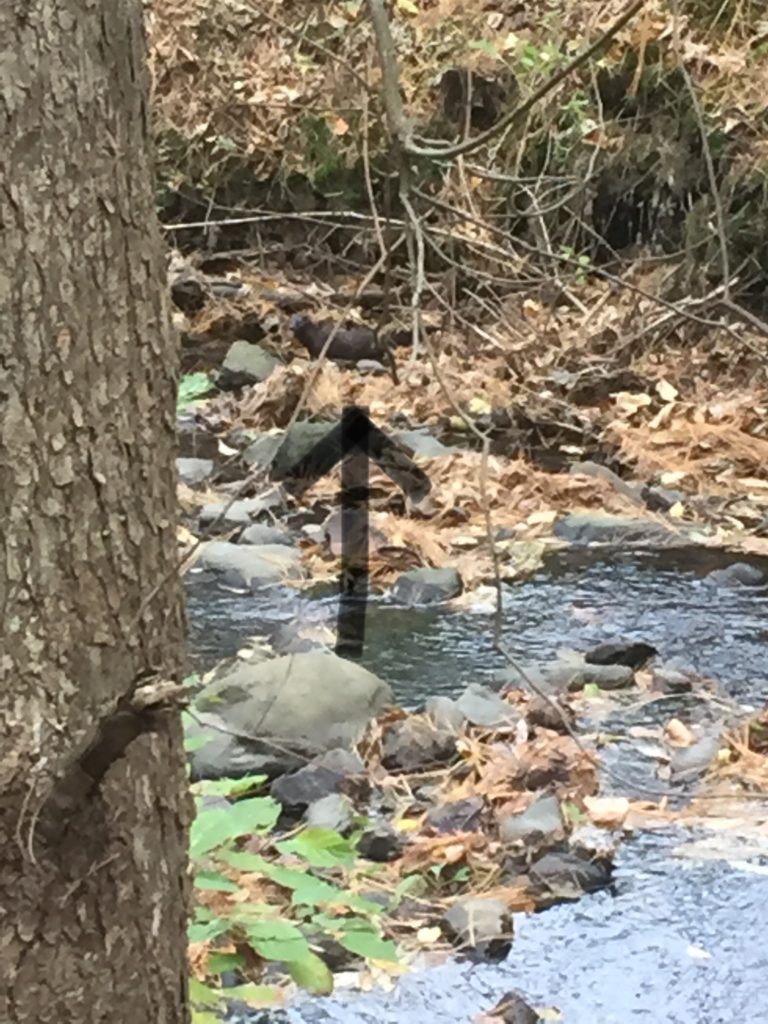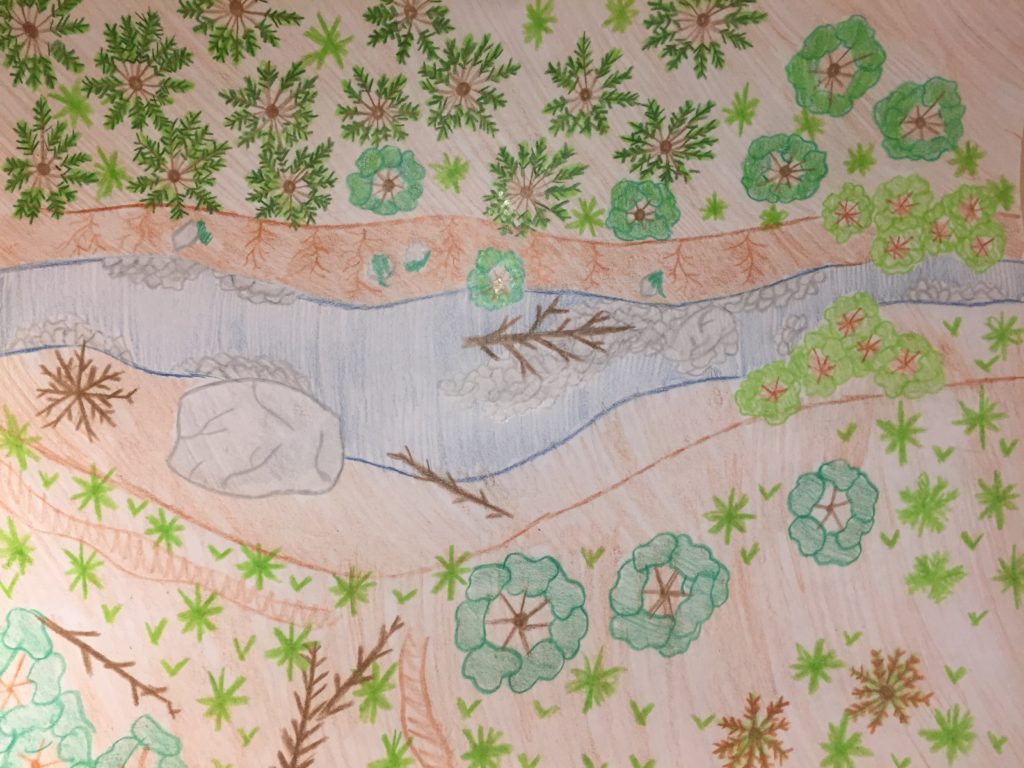When I first entered my sight, I noticed that nearly every ground level surface was covered in pine needles from the Eastern White Pine trees on my site. I believe that these changes occurred as a result of both of the older needles dropping as part of an annual autumnal shedding and the recent high winds. When I visited my sight last, most of the larger trees still had their leaves and many of the leaves were turning shades of yellow and orange. However, I noticed upon return that the only leaves still left on the tree were green. The trees that turn earliest had lost all of their leaves before the other trees even bean to turn. My entire site is covered either in pine needles or dead leaves, so no tracks were visible. However, I did notice other signs of life. There were a few pieces of small of scat that, upon some research, I can identify as squirrel droppings. In addition, I noticed small holes in the trees that were confirmed to be those of a female, Black-backed Woodpecker. In addition to the woodpecker sighting, I saw several Black-capped Chickadees searching for food in the understory and ground vegetation. The most exciting sighting was that of an American Mink who was hopping in and out of the Brook. I was unable to take clear pictures of the birds, but I did manage to capture a glimpse of the mink before he slipped back into the water.
Posted in Uncategorized | Leave a Comment »
The brook that flows through the center of my site divides the area into two areas with slightly different vegetation. One side of the water, there is a steep bank with primarily coniferous trees and a lack of leafy ground cover. Though this bank lacks leafy plants, the ground is covered in pine needles and many of the root systems are exposed. Additionally, a few patches of Moss grow primarily on this side of the brook. The lower bank contains a greater variety of deciduous trees and almost the entire ground is covered in small leafy plants. Both sides have a few dead or downed trees which made identifying some of the species particularly difficult. The foliage at this point still retained a mostly green color, with a few tints of yellow emerging in some of the trees. The most common woody plants at this site were: Eastern White Pine, Green Ash, Norway Maple (younger), Red Maple (younger), buckthorn, and several unidentified Ash trees.
Posted in Uncategorized | Leave a Comment »
Hello fellow nature lovers! Thank you for visiting my blog. Over the course of this year, I will detail the seasonal changes that occur at my site. To locate my spot, enter Centennial Woods at the trailhead. Keep walking along the path until you reach the Eastern White Pine clearing. Take the right-most path and walk a little ways down the hill to find a massive rock. This rock will be the center of my site. I chose this site because of the diversity in vegetation and even abiotic elements. A slight turn of the head can make you feel as though you entered an entirely different area.
Posted in Uncategorized | Leave a Comment »
https://www.google.com/maps/d/edit?hl=en&mid=1c0dT4DKj9ne8Yengnxy3CLr7ar3_Byly&ll=44.47561787790706%2C-73.18691360000003&z=18
Posted in Uncategorized | Leave a Comment »

